Reviews
David Byrne
USA, 1986
Credits
Review by Evan Kindley
Posted on 17 December 2010
Source Netflix VOD
External links
Related music at Doom & Gloom from the Tomb
Categories Rock Follies
Welcome to Texas! “This part of the country’s been through a lot of changes. Not all small ones either,” David Byrne tells us at the start of True Stories in a voice well described by Roger Ebert as “so flat that you have to listen to the pauses to figure out when the sentences end.” An opening montage of stock footage gives us a brief history (and prehistory!) of the state, from the dinosaurs to the Indians to the messy history of European colonization and territorial disputes to the booms in cotton, cattle, oil and tech industries. Soon Byrne himself steps on screen, and on stage, in a black Stetson hat and string tie, before an enormous slide projection cycling through photographs of Virgil, Texas, a (fictional) town that is about to hold a day-long “Celebration of Specialness” to mark the sesquicentennial anniversary of the state’s founding. The event is being sponsored by Varicorp, a local computer manufacturing company that accounts for much of the town’s recent prosperity. When Byrne is done speaking, he slips through a heretofore invisible slit in the middle of the screen, only to reappear on the other side behind the wheel of a car, gliding down an otherwise empty freeway.
This introduction prepares us pretty well - or as well as anything could - for the mix of styles, tones and registers in what follows. At once more restrained and more ambitious than the average rock star-driven film, True Stories is part urbanist treatise, part Altmanesque narrative, part mockumentary, and part musical (“a completely cool, multi-purpose movie,” as the film’s tagline has it). Byrne, at the height of his fame and bankability after the double whammy of Talking Heads’ Stop Making Sense and Little Creatures, used the opportunity to direct a feature film to do justice to all of the interests and parts of his personality that hadn’t been adequately expressed in his previous output, which tended to privilege nervousness, alienation, and near-autistic difficulty with communication. True Stories, by contrast, is Byrne’s first sustained attempt at warmth and democratic inclusiveness, a stab at the sort of big-tent aesthetic that his Sense collaborator Jonathan Demme was cultivating at the time. Though there had been hints of this sensibility on Little Creatures, this is the real debut of Byrne the awkward humanist, a role he’s been playing, with variations, ever since.
The ostensible premise of True Stories, as the winking title suggests, is that the material in it was culled from tabloid newspapers (in the days when they focused on bizarro private citizens rather than a few dozen celebrity couples). This may well be true, but the film is also clearly a receptacle for the many passing details of American life observed on Talking Heads tours (of the kind that continue to be recorded on Byrne’s frequently updated online journal). A typical nugget is Byrne’s taxonomy of the different kinds of freeway drivers: the “slingshotter,” the “adventurer,” the “marshmallow,” the “nomad,” the “weaver.” The tone of these remarks isn’t so much pedagogical as colloquial: at one point Byrne announces that “I have something to say about the difference between American and European cities. But I’ve forgotten what it is,” adding, “I have it written down at home somewhere.” This is the kind of data your brain processes best when you’re traveling or visiting somewhere unfamiliar, a fact Byrne’s narrator acknowledges late in the film:
I really enjoy forgetting. When I first come to a place, I notice all the little details. I notice the way the sky looks. The color of white paper. The way people walk. Doorknobs. Everything. Then I get used to the place and I don’t notice those things anymore. So only by forgetting can I see the place again as it really is.”
Such gee-whiz monologues risk coming off as rather precious, but Byrne smartly guarantees his sense of wonder by enlisting star cinematographer Ed Lachman (who by then had shot documentaries for Wim Wenders and Werner Herzog, and would go on to work with Todd Haynes, Larry Clark and Steven Soderbergh) to shoot Texas as the beautiful alien landscape described in his narration. The most obvious influences on the aesthetic of True Stories are not other filmmakers but visual artists, in particular the photographer William Eggleston1 and the painter Ed Ruscha, both of whom share a fascination with kitsch Americana and a flat, neutral, low-key affect.
For me, the scenes of Byrne driving and musing through Lachman’s Polaroid-crisp landscapes are the most effective moments of True Stories, the reason to return to the film. (The film itself returns, constantly, to them: Byrne and editor Caroline Biggerstaff make ingenious use of stock footage and second-unit material throughout: this is a film where the dialogue scenes sometimes drag but the interstitial landscape footage always commands attention.) There is more, however, not all of it quite as successful. There are, for a start, other characters, some of them played by competent, interesting actors: John Goodman as ursine bachelor Louis Fyne, Swoosie Kurtz as bed-bound millionairess Miss Rollings, Spalding Gray as pillar of the Virgil community Earl Culver. All of them give memorable, intriguing performances (especially Goodman, who grounds the increasingly scattered movie in its second half), but none seem quite as comfortable in this imagined America as Byrne himself does. (In retrospect, it may have been a mistake to cast so many East Coast ringers rather than native Texans: the tension between Byrne’s artificial constructions and some more authentic locals might have produced some interesting effects.)
There is a story of sorts - mostly involving Louis seeking a wife (in part through TV commercials) and various preparations for the Celebration of Specialness, which concludes the film in the manner of the concert in Robert Altman’s Nashville - but this only one of the methods Byrne uses to tie everything together. Occasional Ruscha- (or Barbara Kruger-) esque title cards delivering messages like “SHOPPING IS A FEELING,” “PUZZLIN’ EVIDENCE” or, simply, “ARCHITECTURE” pop on screen from time to time, though there aren’t quite enough of them to impart a real sense of structure (in fact, they feel more like a solution resorted to in the editing room). The music also provides something of a unifying thread: besides Byrne, the film is studded with musicians, from soul legend Roebuck “Pops” Staples to L.A. punk obscurity Tito Larriva. Talking Heads composed and recorded nine original songs for the movie, released on the album of the same name with Byrne vocals, but in the film he sings only three: the singles “Wild Wild Life” and “Love for Sale” - represented by entertaining but relatively irrelevant video interludes - and the closing “City of Dreams.” The others are taken by various members of the cast: Annie McEnroe delivers a wispy rendition of the lovely “Dream Operator” while hosting a surreal fashion show at a local shopping mall, Pops Staples mutters his way through “Papa Legba” while preparing a voodoo potion, and Goodman belts out the country anthem “People Like Us” with a good deal more heartland fervor than Byrne can convincingly manage on the album version.
Another through-line, more unexpected, is the deep vein of paranoia among these peaceful Virgilians. While the tone of True Stories is more Raymond Carver flat than Thomas Pynchon crazed, everyone in town seems to have a pet conspiracy theory or two. A recurring character known only as the Lying Woman claims to have had relations with Elvis, JFK, Michael Jackson and “the real Rambo,” only to have it all hushed up by powerful authorities. A ranting preacher exhorts his congregation to “look at what’s happened to the national morals” and at “who’s been running this country since World War II” and goes on to sing a gospel number called “Puzzlin’ Evidence” (“You got the CBS / And the ABC / You got Time and Newsweek / They’re the same to me”). Even upstanding business leader Earl Culver sounds a bit wacked-out (“Let me show you what I think is going on”) as he expounds on the future of microelectronics over dinner, illustrated by dishes shot from overhead to simulate a diagram of the Virgil economy (a sequence which allows Byrne to deliver his best line: “Excuse me, Mr. Culver, I forgot what these peppers represent”). The coexistence of quiet suburban prosperity and wild anti-authoritarian fantasy seems prescient in light of the recent rise of the Tea Party: age any of True Stories’ characters twenty-five years (and outsource their cozy manufacturing jobs) and it’s easy to imagine them turning out to a Glenn Beck or Sarah Palin rally.
All this suggests an element of satire, of dissident disbelief in the simple capitalist virtues espoused by the Virgilians of the microchip era, and I’ve heard it claimed that Byrne is not in fact celebrating but making fun of Texans and other “ordinary Americans” in True Stories. Byrne, a Scot by birth, has always had a keen eye for the oddity of human behavior in general, and that of Americans in particular. True Stories, I think, is an attempt to redirect that knack for zeroing in on the oddness of our country and use it for ends other than mockery or distance. The project of exploring the dark or weird underside of suburban America was still relatively fresh in 1986 - the year of David Lynch’s Blue Velvet, remember - but Byrne is after something a little different, a little less subversive and a little more immersive.
This is not to entirely disclaim a political motive, however. Political matters are rarely mentioned explicitly in True Stories - the closest we get is the Narrator’s capsule history of the land grabs and exploitations of the recent past - but Byrne could hardly have been unaware that Texas was one epicenter of the neoconservative revolution that by 1986 had already swept much of the nation, and would later give us the likes of George W. Bush. True Stories must in fact be read as a response to the return of the repressed political energies of the heartland in the Reagan era, presaged in a song like 1978’s “The Big Country.” In that song, Byrne ticks off the same kind of modern American phenomena with which True Stories is concerned -
A baseball diamond, nice weather down there. / I see the school and the houses where the kids are. / Places to park by the factories and buildings. / Restaurants and bars for later in the evening. / Then we come to the farmlands, and the undeveloped areas. / And I have learned how these things work together. / I see the parkway that passes through them all …”
before finally, in the chorus, recoiling with a yelp,
I wouldn’t live there if you paid me! / I wouldn’t live like that, no siree! / I wouldn’t do the things the way those people do. / I wouldn’t live there if you paid me to!”
Nearly ten years later, this very New York punk revulsion had been tempered by success, experience, and, most importantly, by the realization that “those people” weren’t going away, and that the things they did and built and bought and wanted, not to mention how they voted and who they voted for, was going to affect the rest of us whether we liked it or not. Maybe that’s why Byrne felt he had to try to understand this America, why he rewrites “The Big Country” in a quieter, less calamitous register throughout True Stories:
Look at this. Who can say it isn’t beautiful? Sky, bricks. Who do you think lives there? Four-car garage. Hope, fear, excitement, satisfaction.”
Hope, excitement, satisfaction. But also, notice, fear.
- Eggleston was in fact brought in to document the film shoot, an assignment that, typically, produced many pictures of the Texas locations where the film was made but no actual evidence of the production itself. ↩
More Rock Follies
-

Head
1968 -
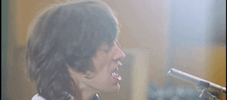
Sympathy for the Devil
1968 -

Alice’s Restaurant
1969 -
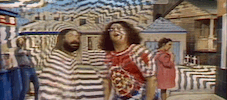
200 Motels
1971 -
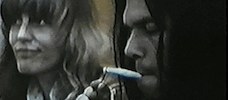
Journey Through the Past
1972 -
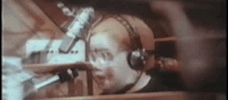
Human Highway
1982 -
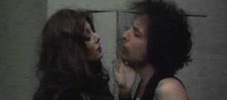
Renaldo and Clara
1978 -
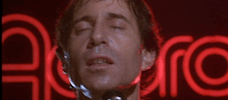
One Trick Pony
1980 -
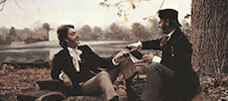
Give My Regards to Broad Street
1984 -
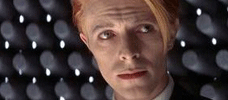
The Man Who Fell to Earth
1976 -
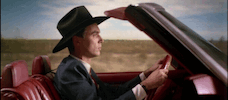
True Stories
1986
We don’t do comments anymore, but you may contact us here or find us on Twitter or Facebook.



